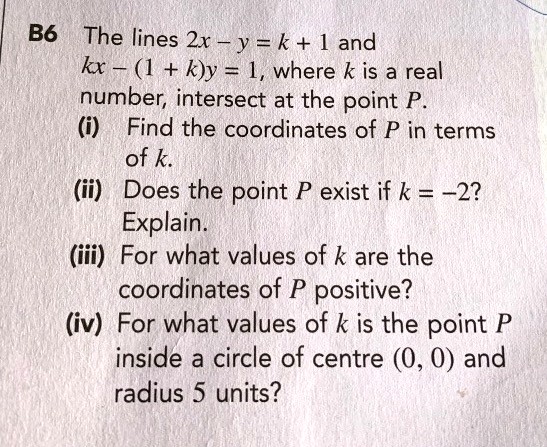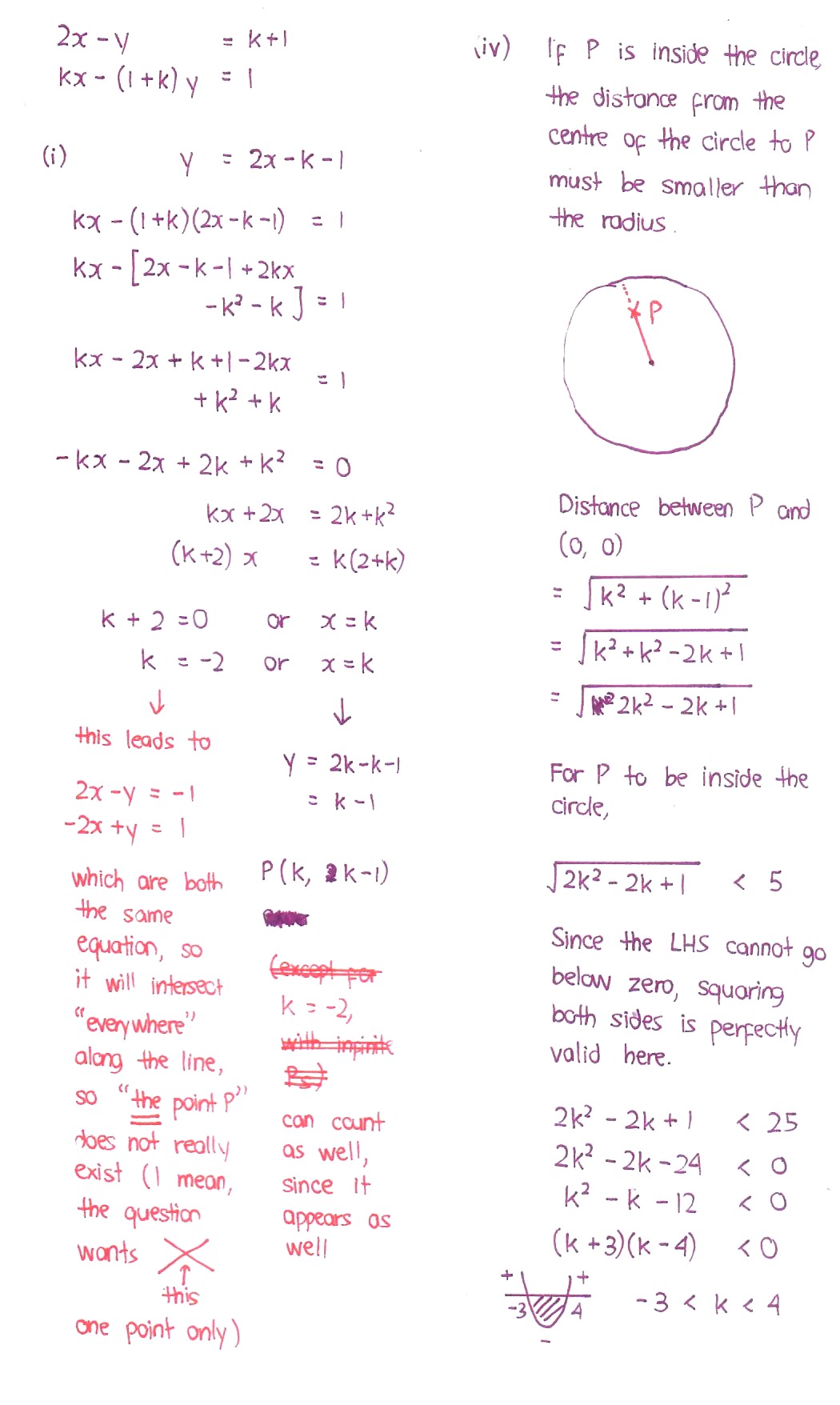Ask Singapore Homework?
Upload a photo of a Singapore homework and someone will email you the solution for free.

Question
secondary 3 | A Maths
2 Answers Below
Anyone can contribute an answer, even non-tutors.

Please help for part (iv). Ans is -3 < k < 4.
See 2 Answers
If I were to use this definition, then I would reject k = -2 even in the fourth part, because I need "P" to be a single defined point.
The solutions to the two simultaneous equations (graphs not shown here) are represented by variable point (k, k - 1). Each value of k represents two different lines intersecting at a specific point, and the red line shows the collection of these intersecting points (k, k - 1) for different values of k (with equation y = x - 1, since the y-coordinate k - 1 is always 1 less than the x-coordinate k).
The blue line is this exception k = -2, where somehow the two "simultaneous" equations become this exact blue line (both equations transpose to this blue line), so everywhere along the blue line is the intersection of the two "simultaneous" equations when k = -2.
Either way, as it turns out, the possible set of values of x for which the blue line is inside the circle is actually a proper subset of the possible values of x for which the red line is inside the circle (means, all the x-values of the blue line inside the circle are also found for the red line, but not the other way).





